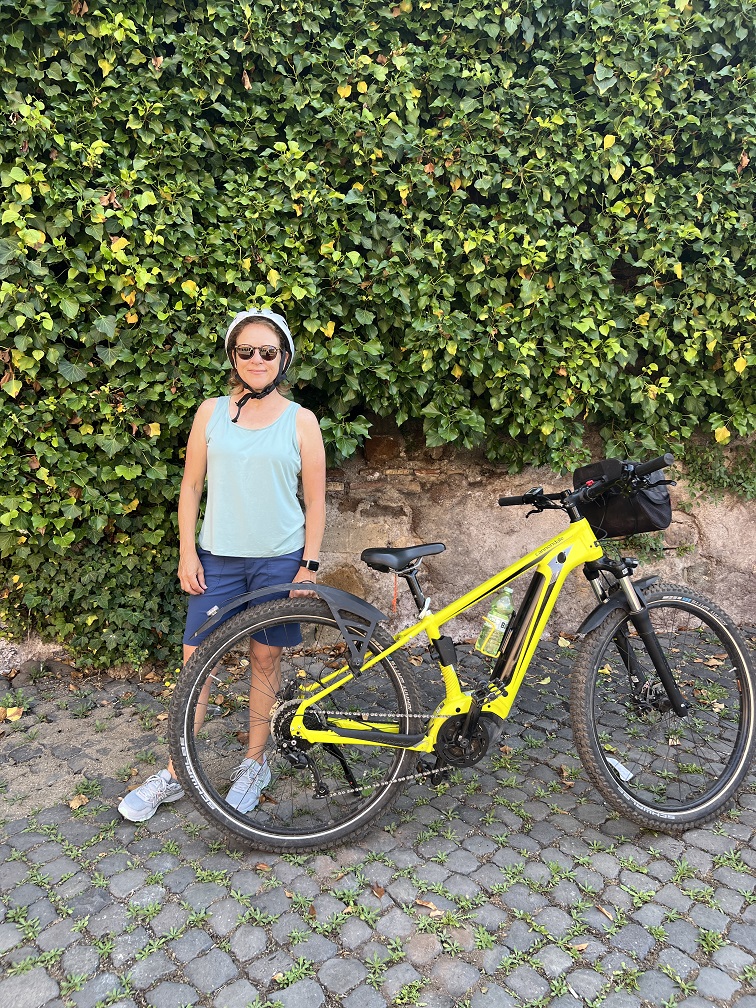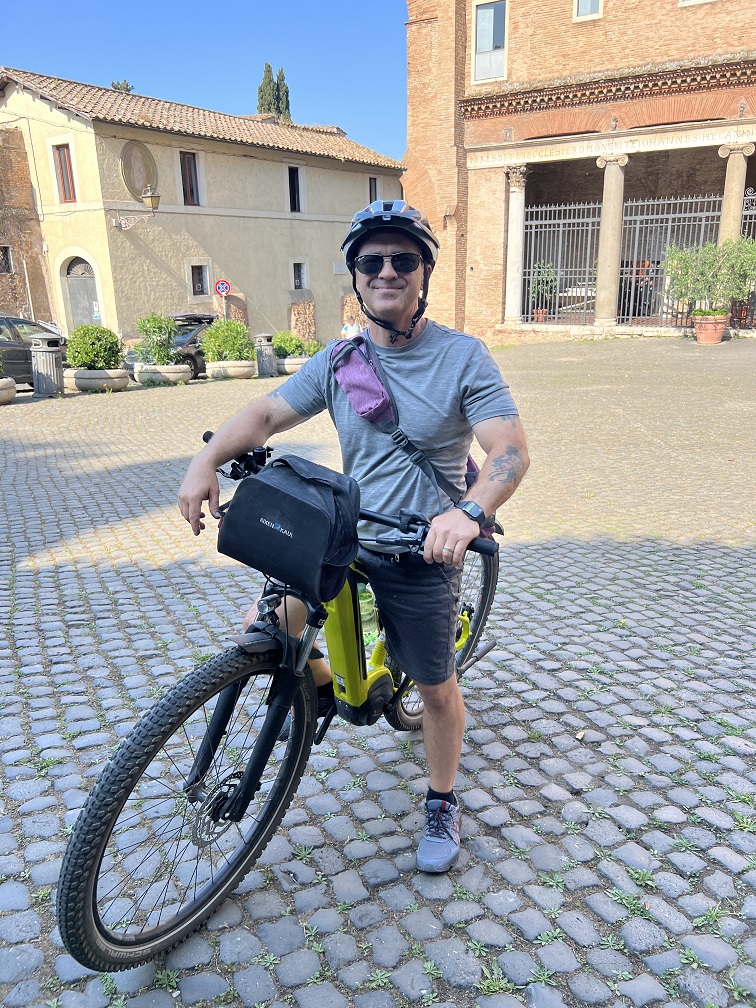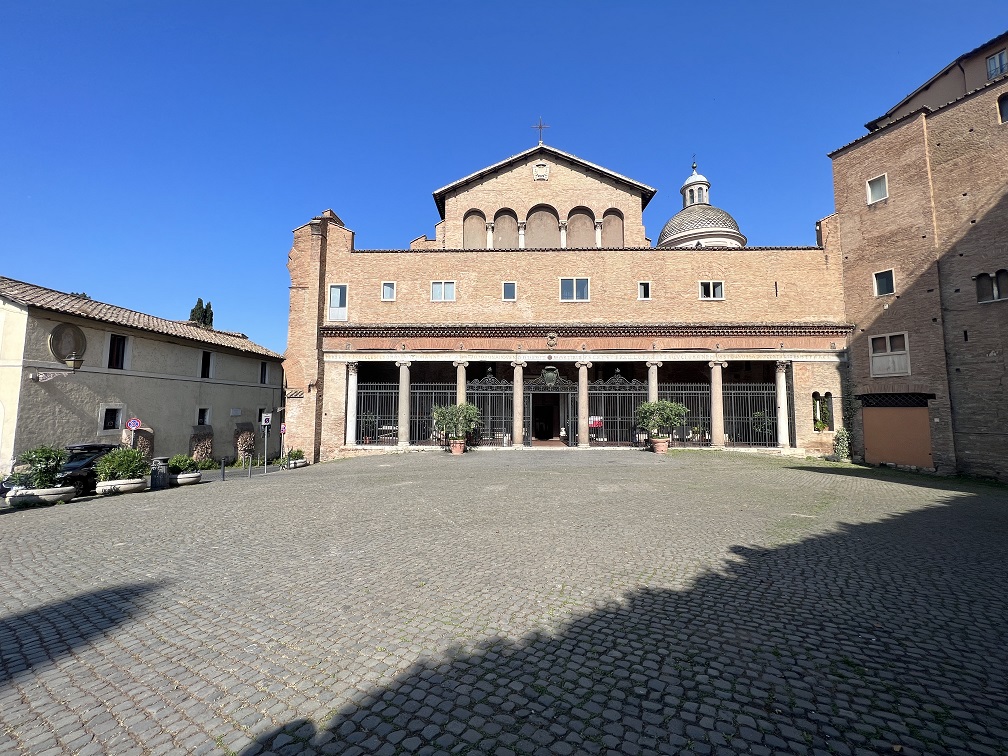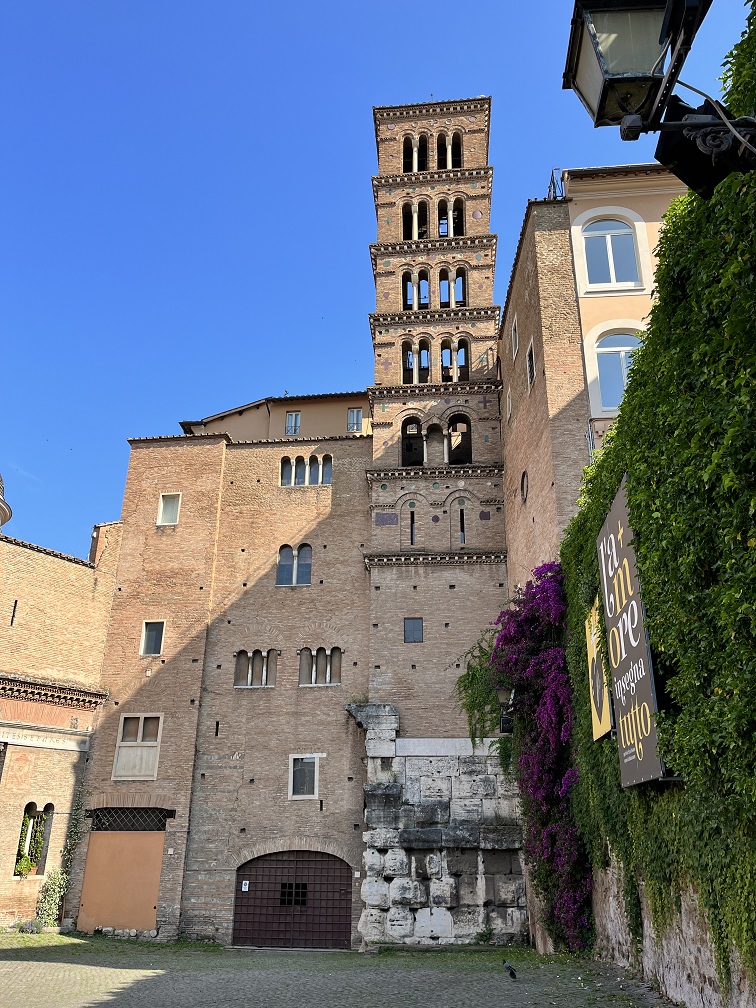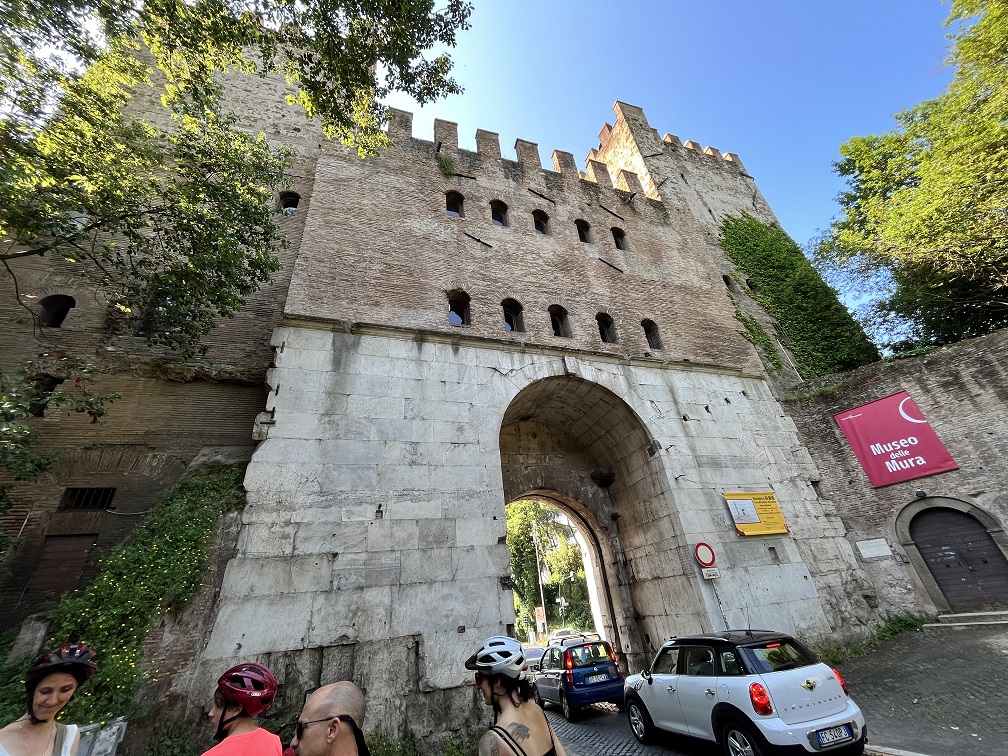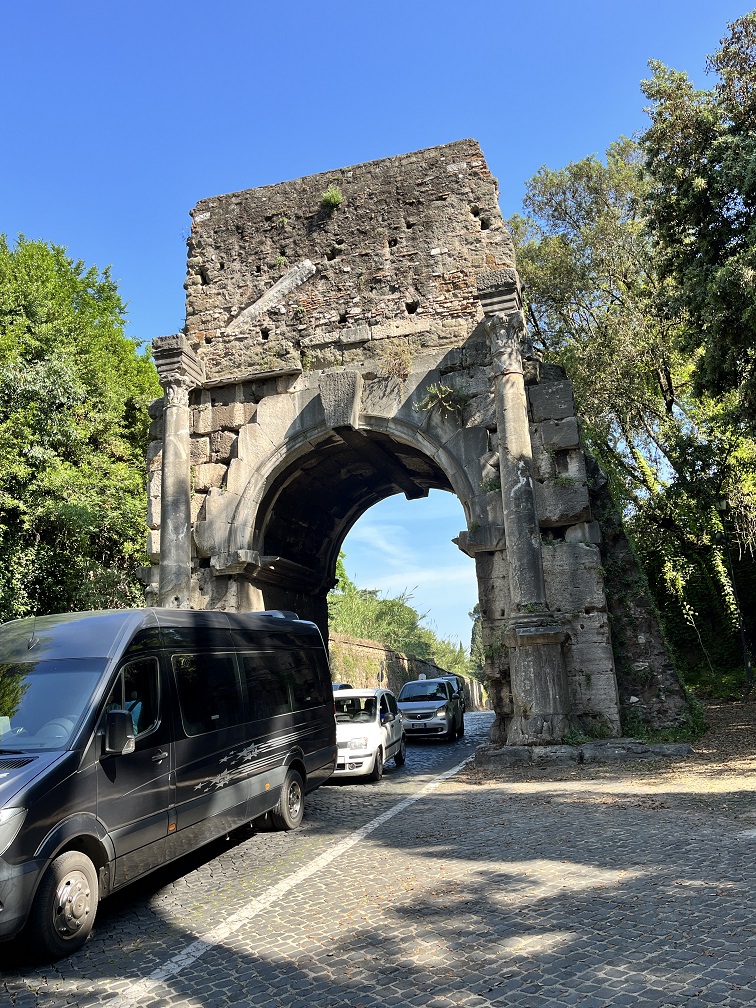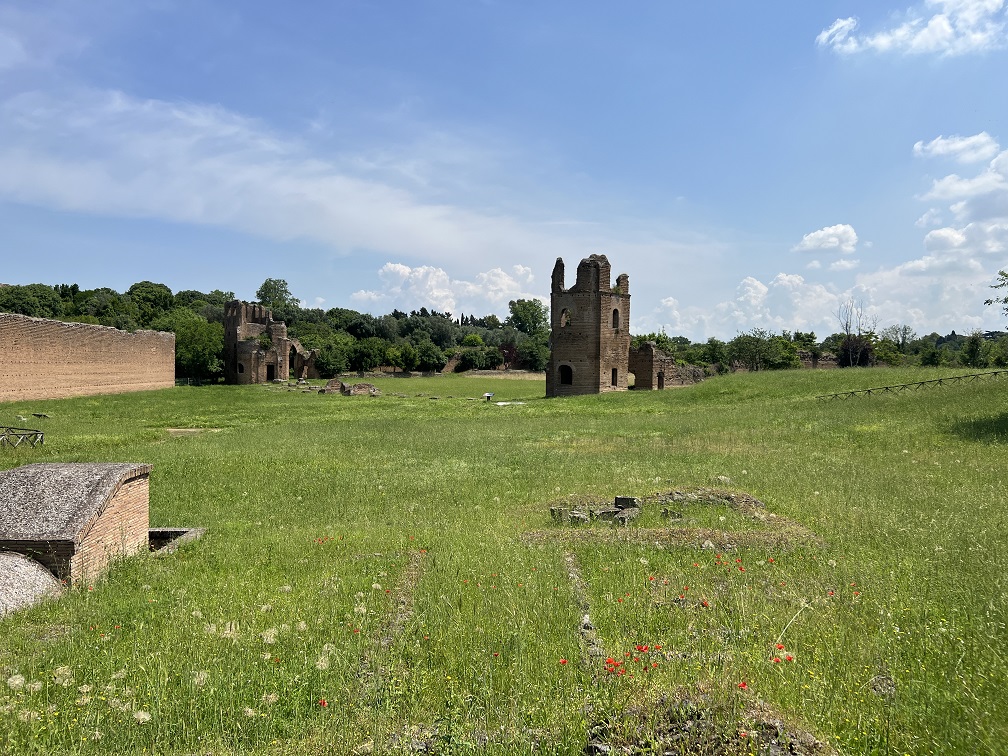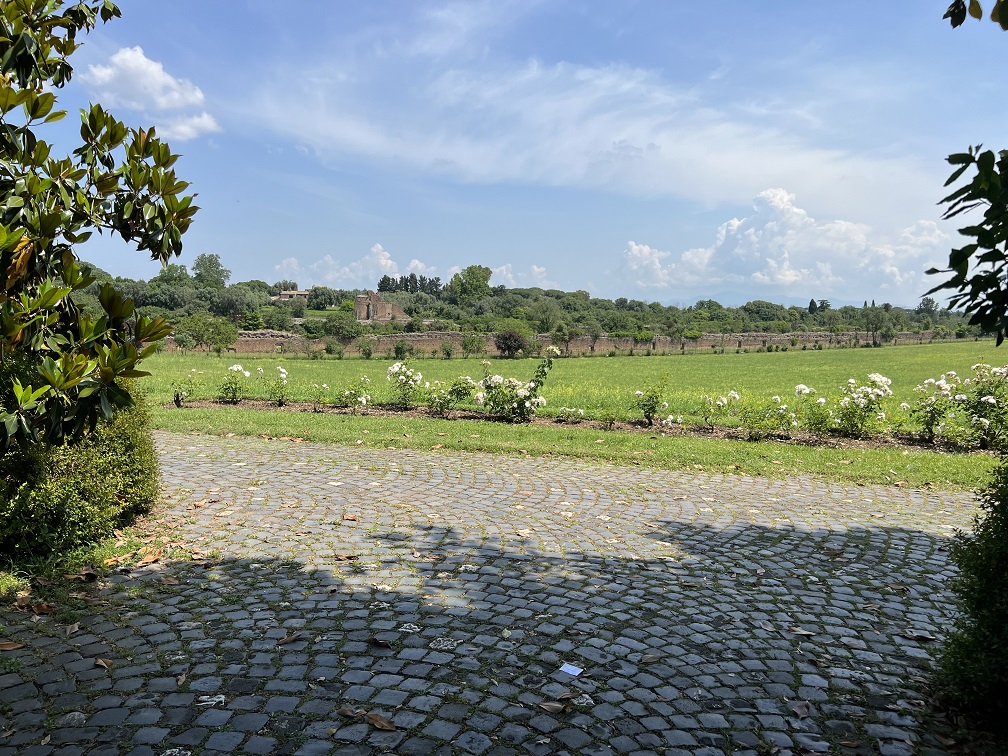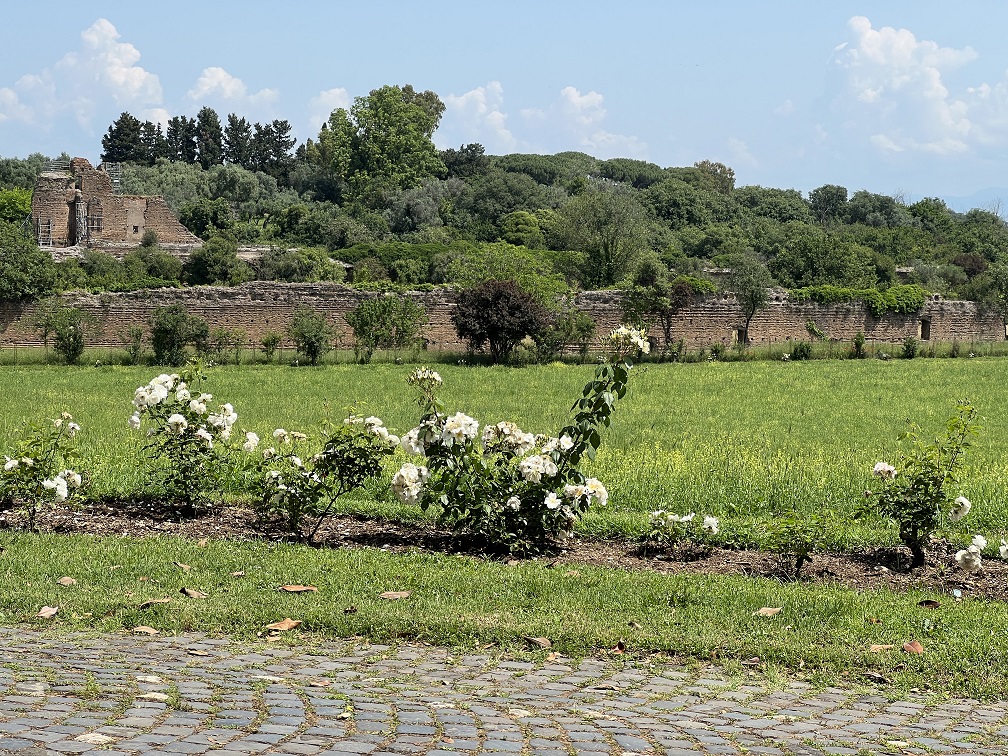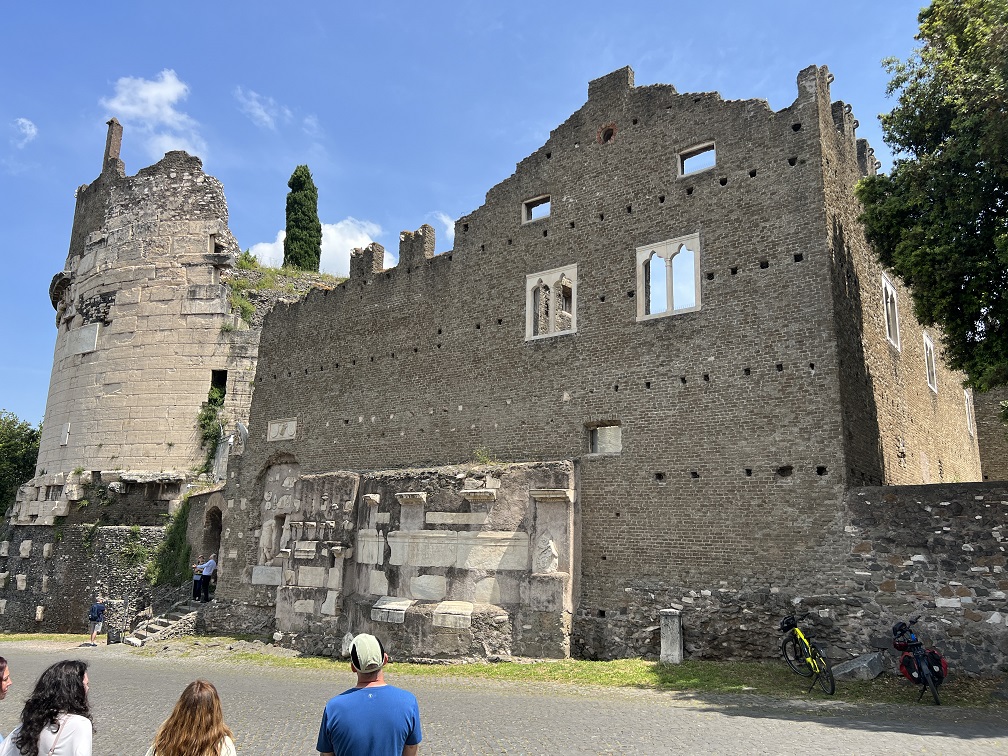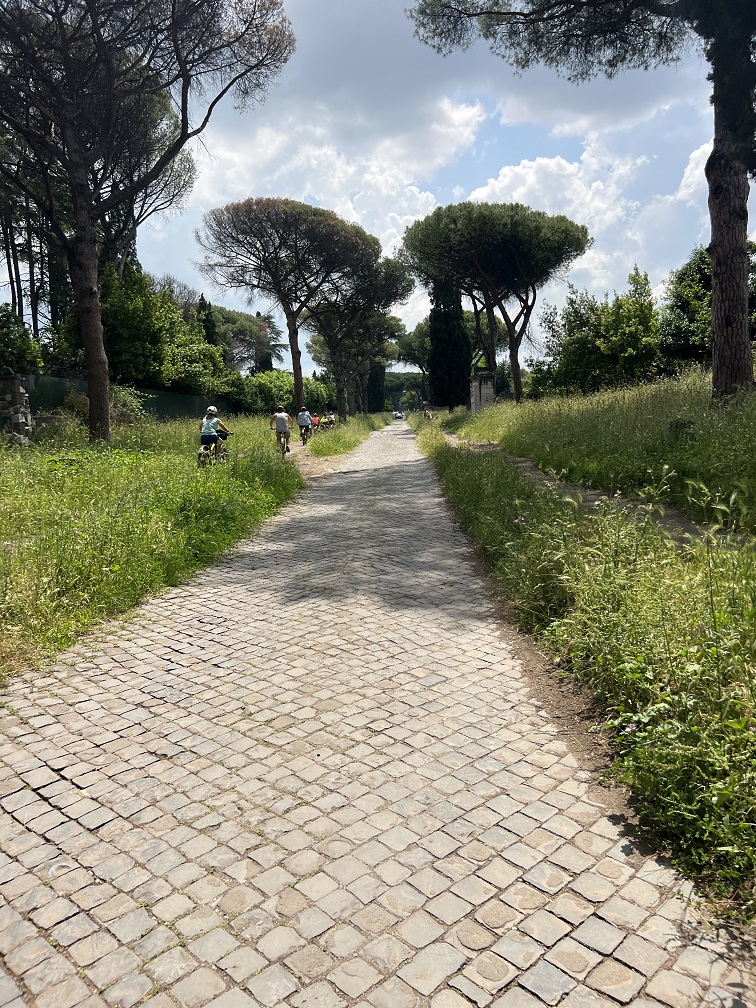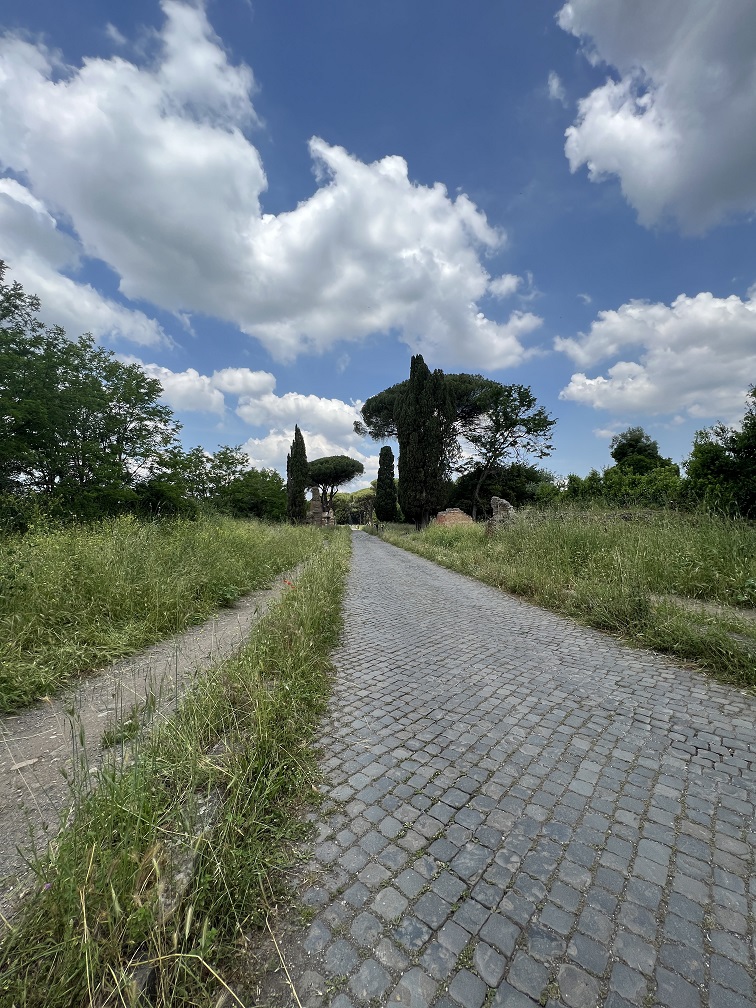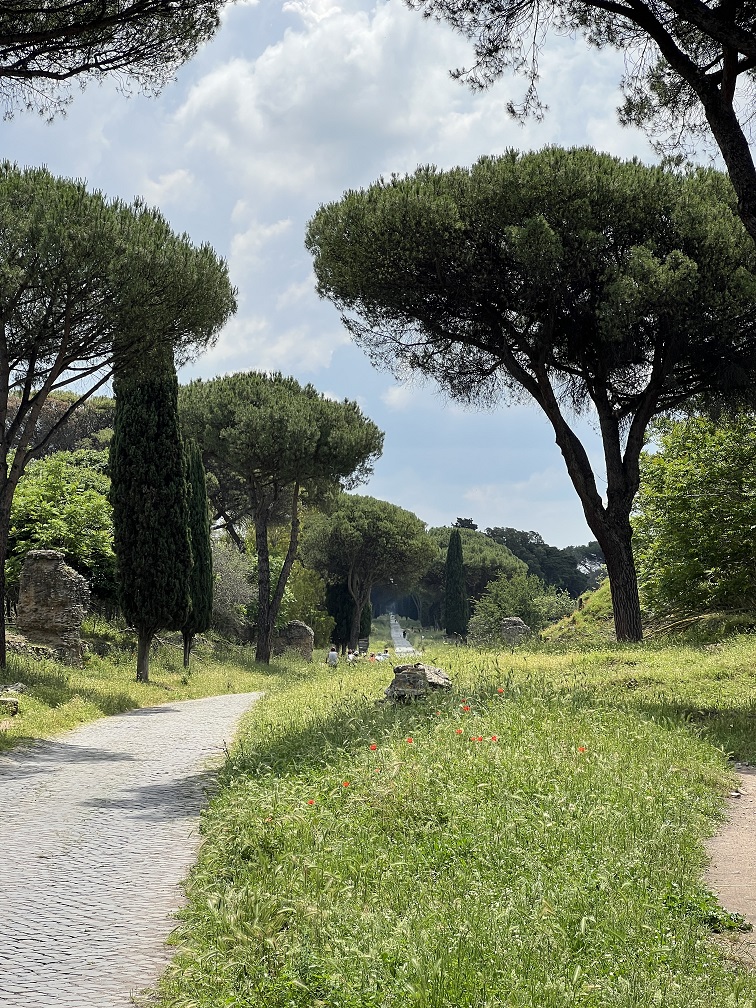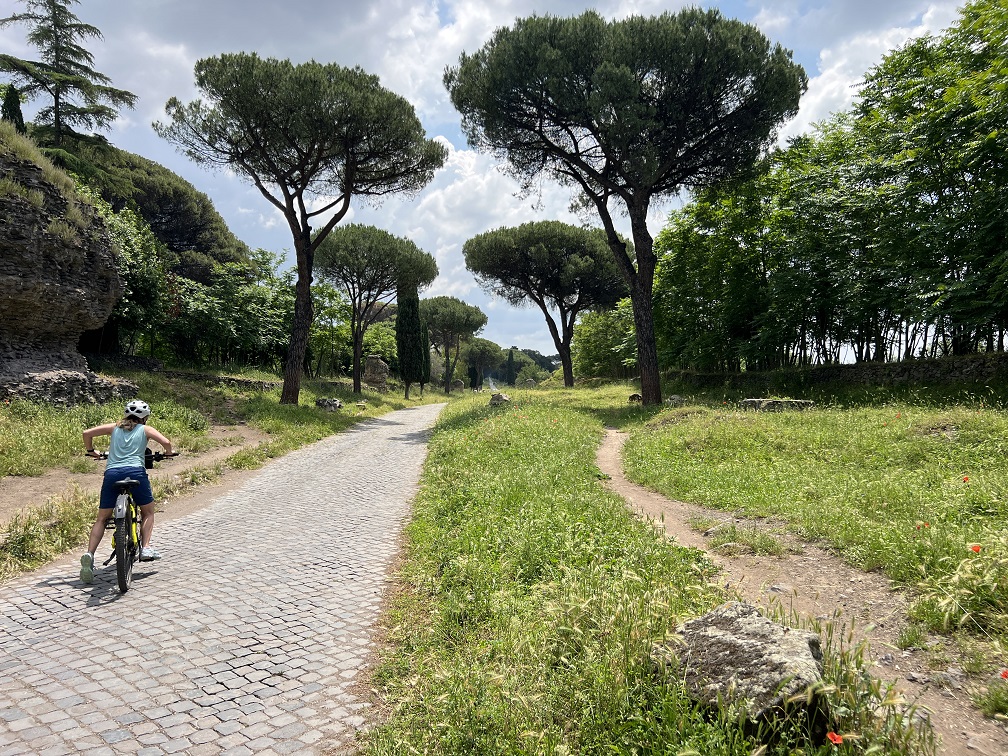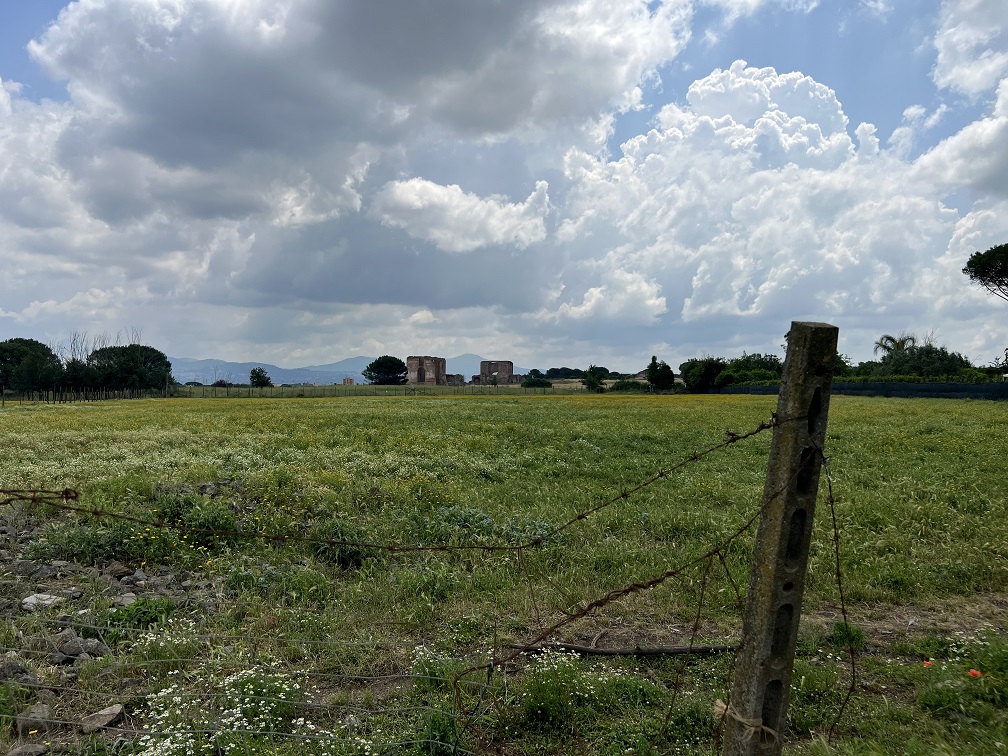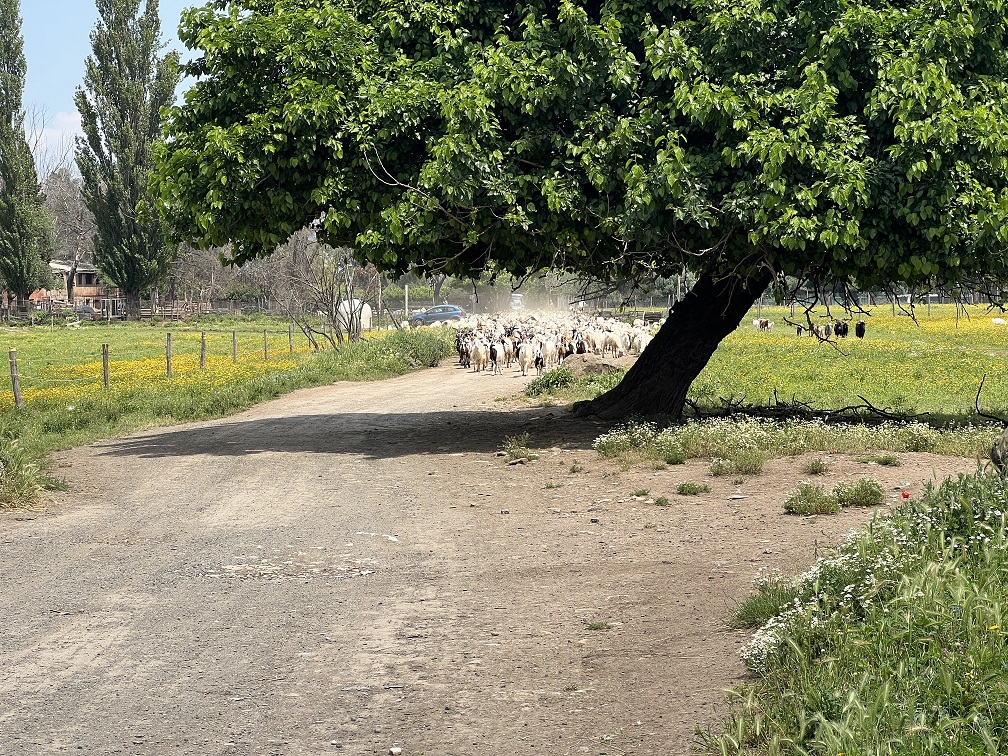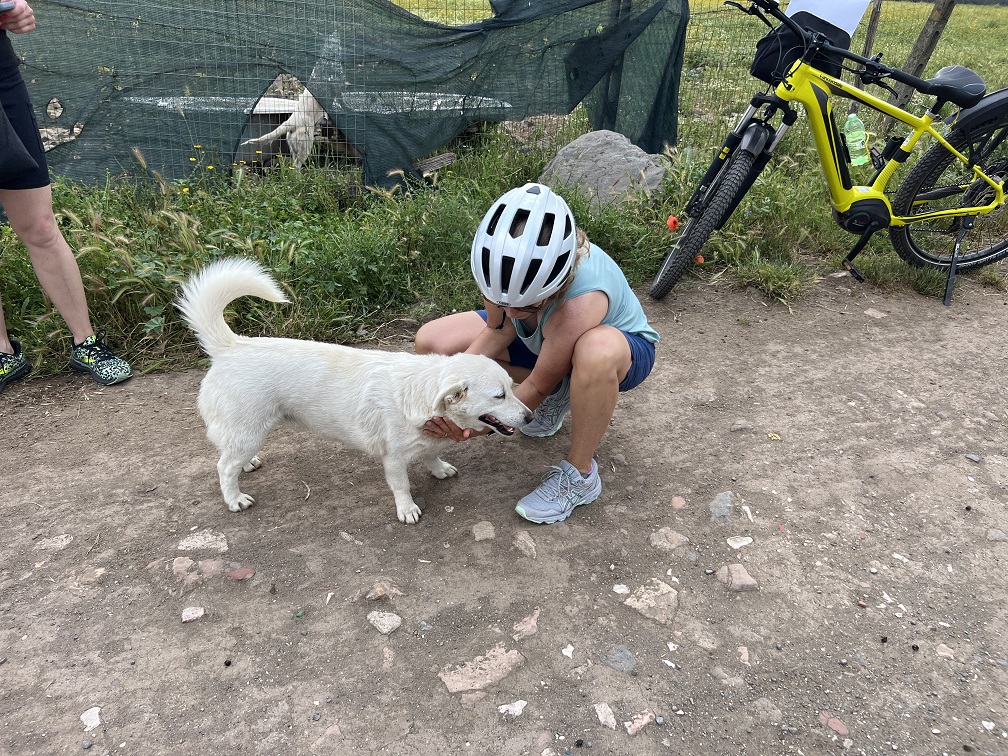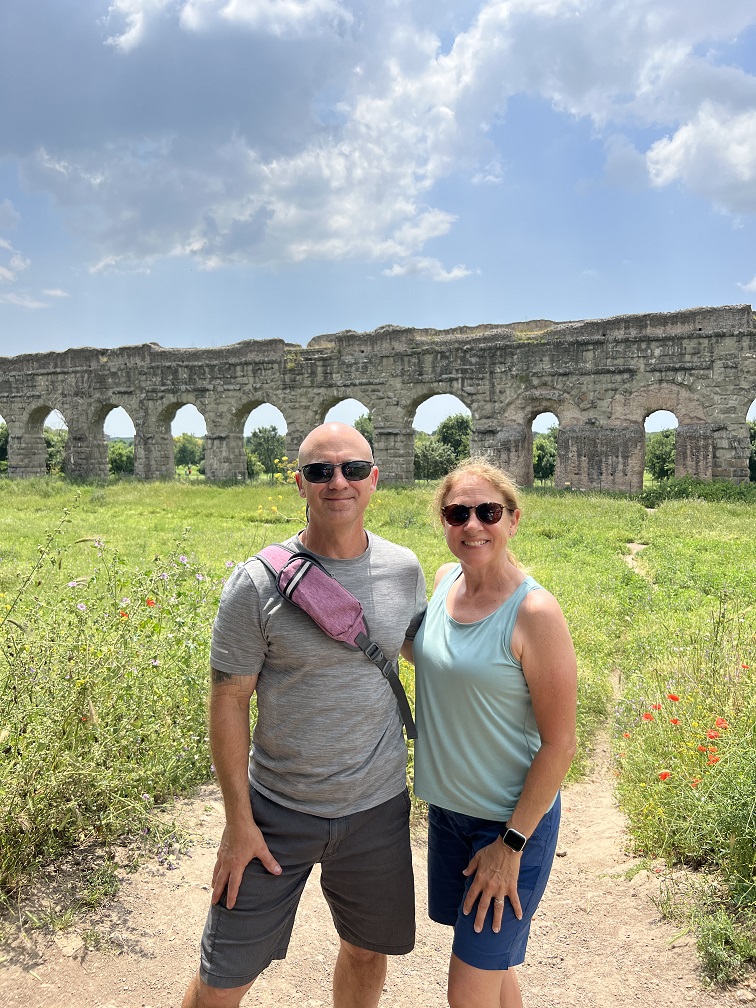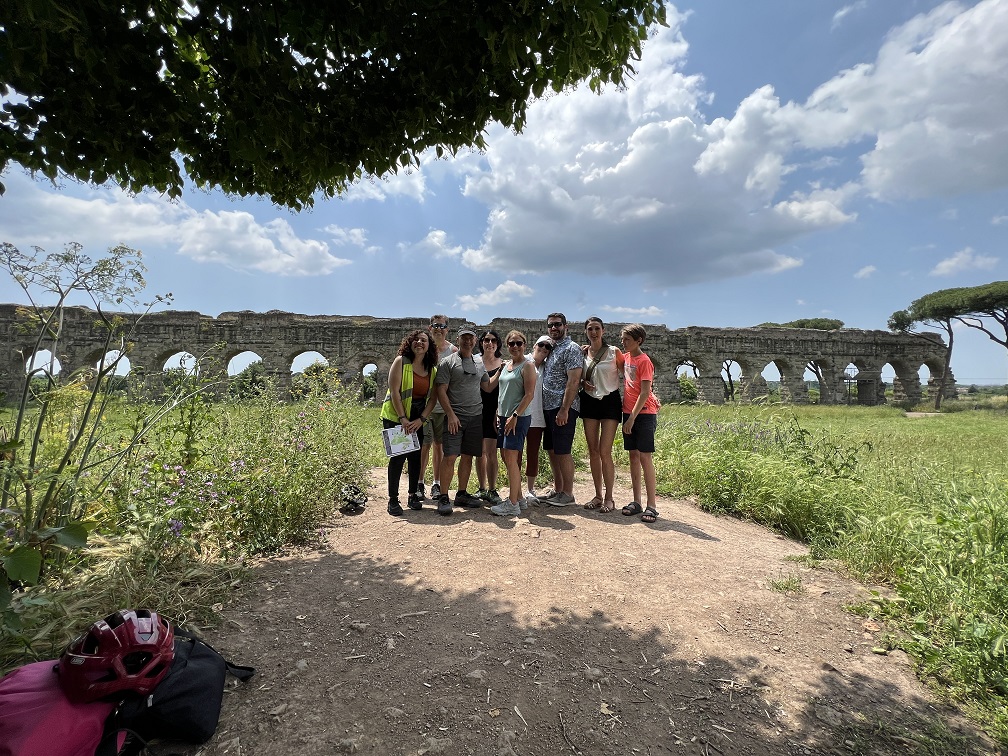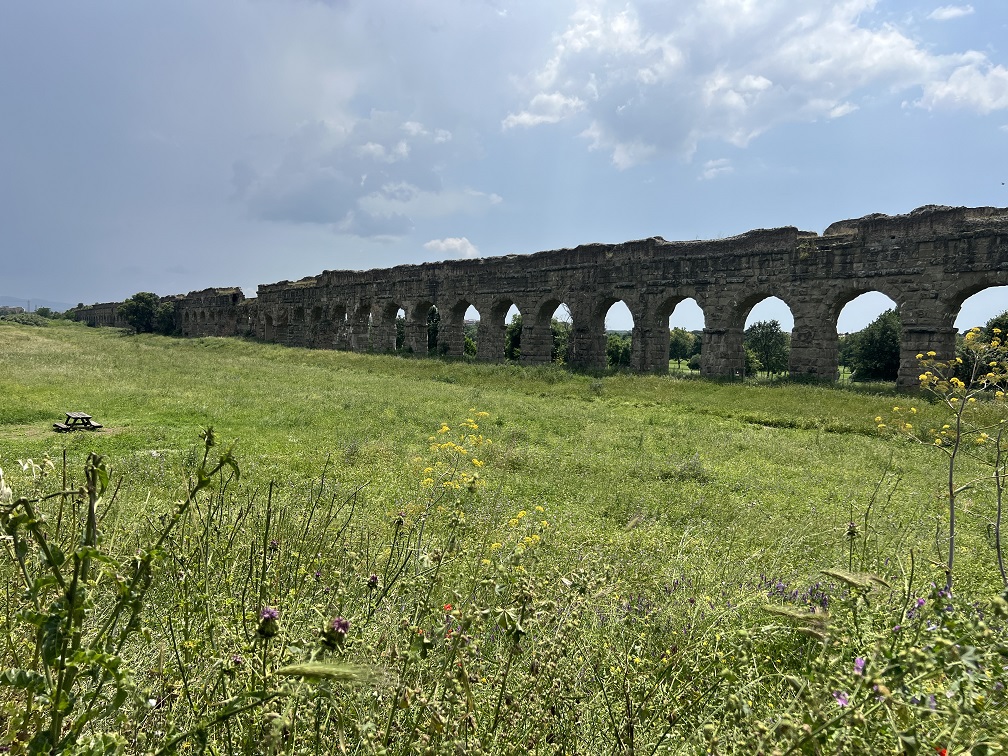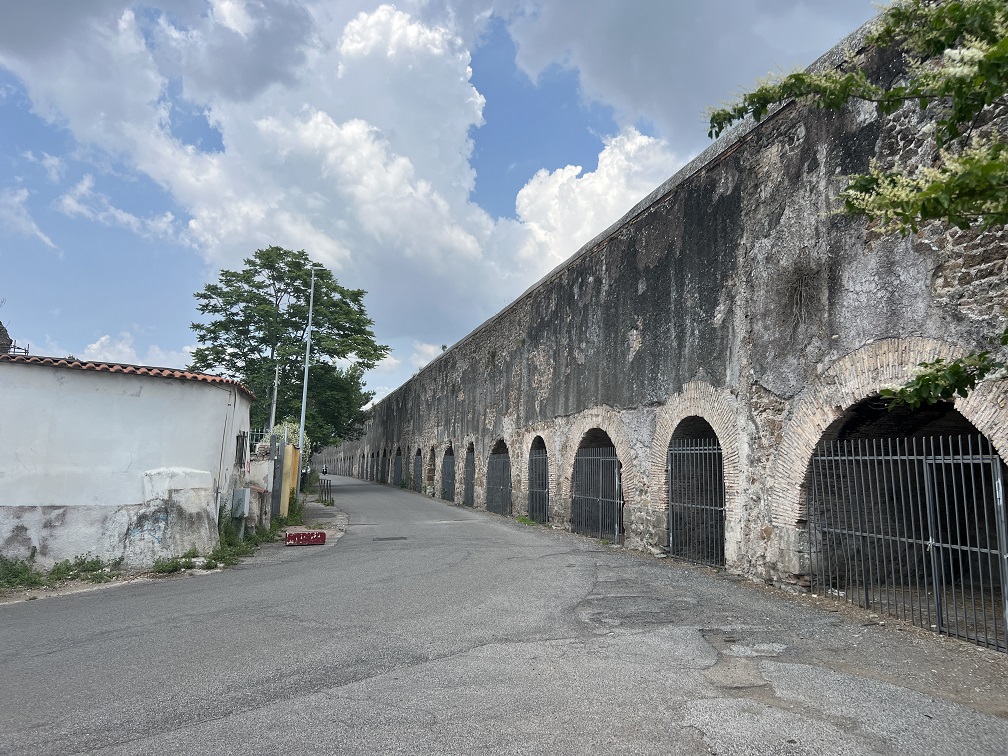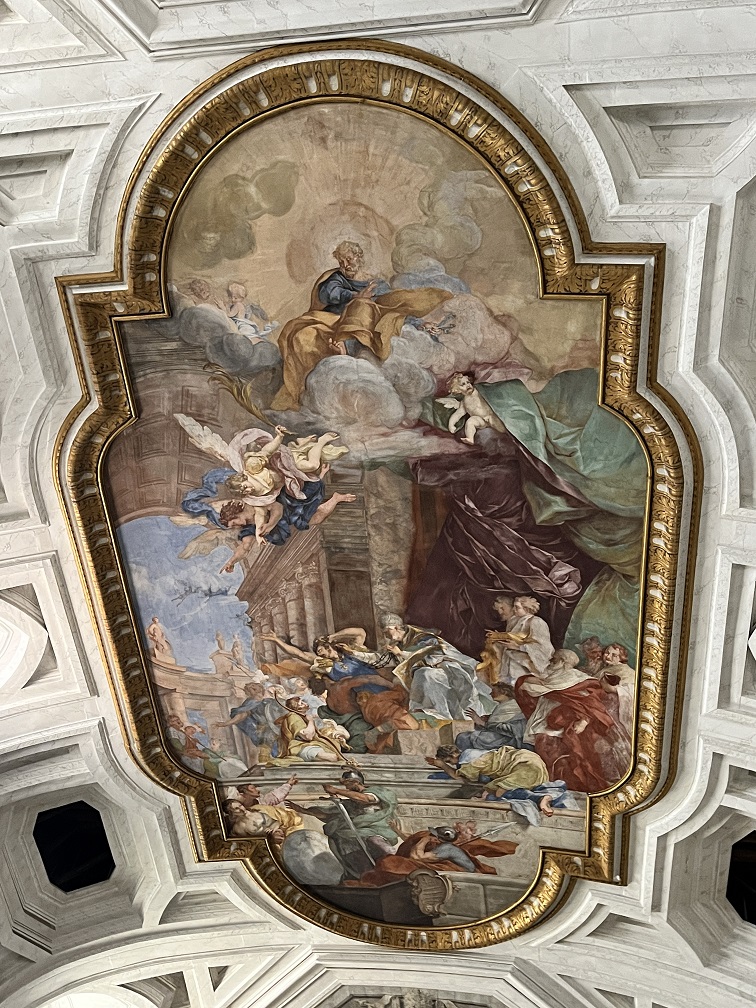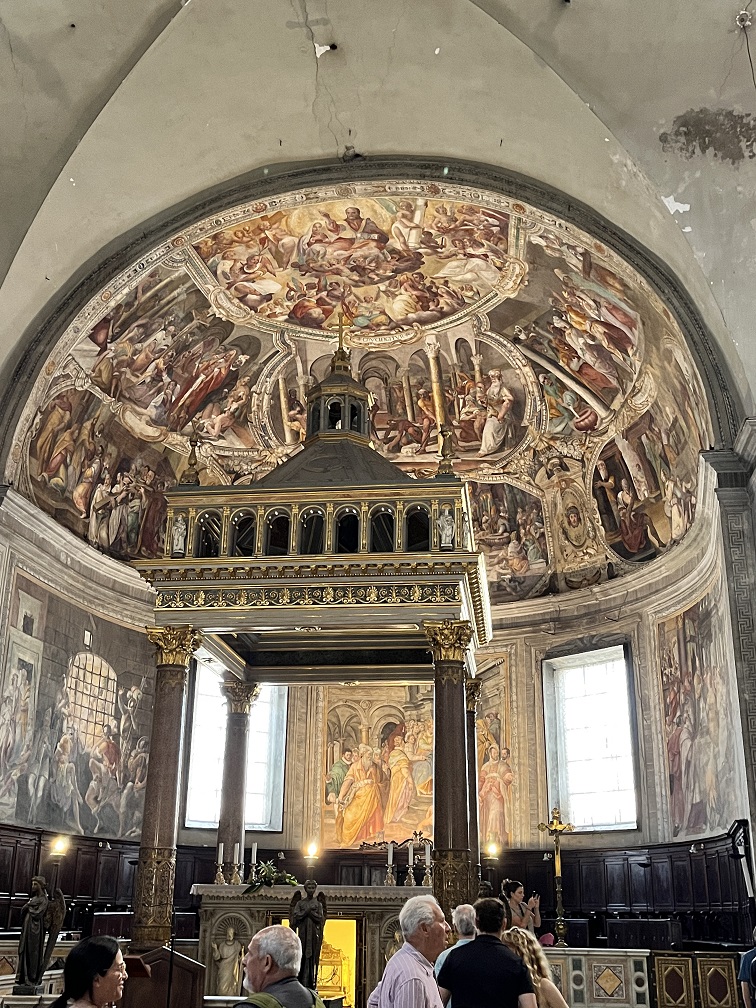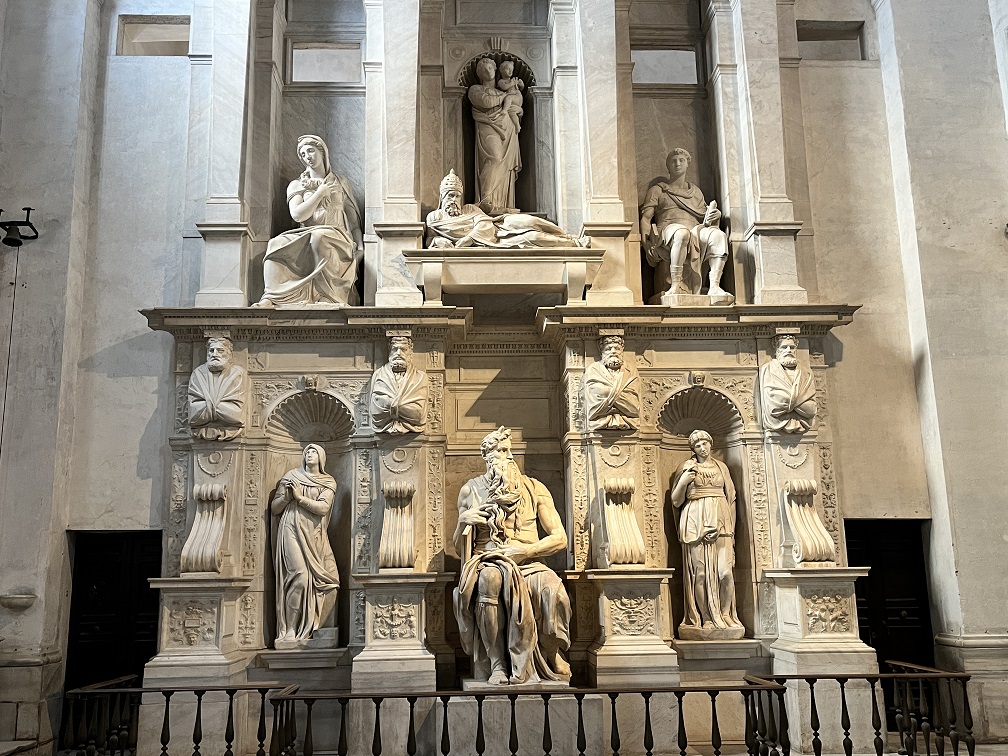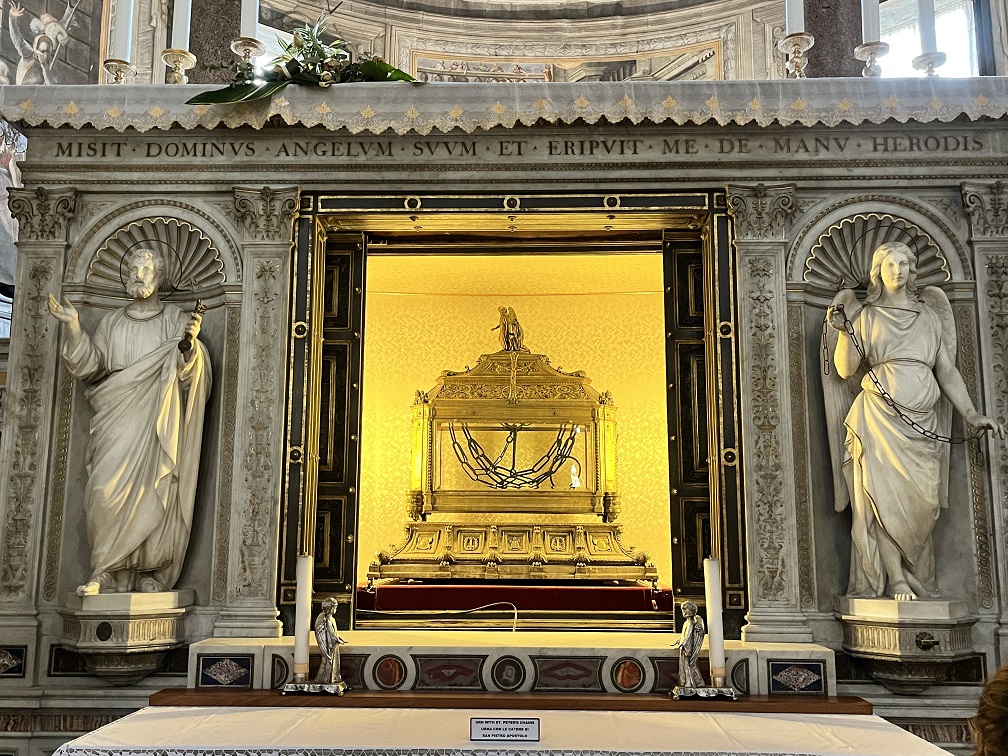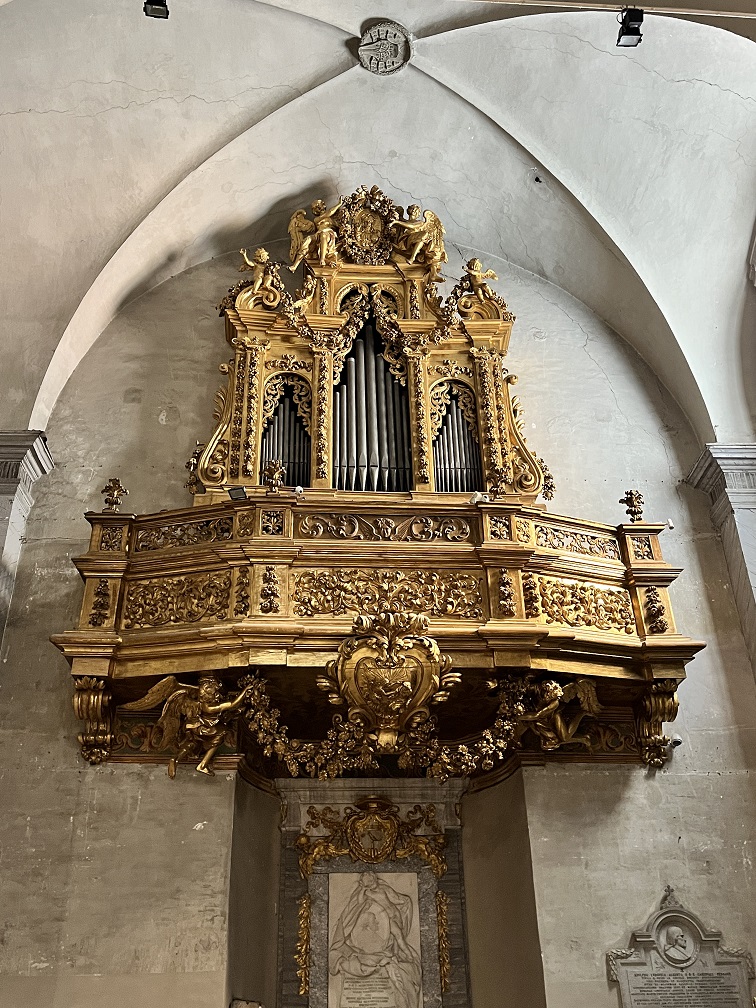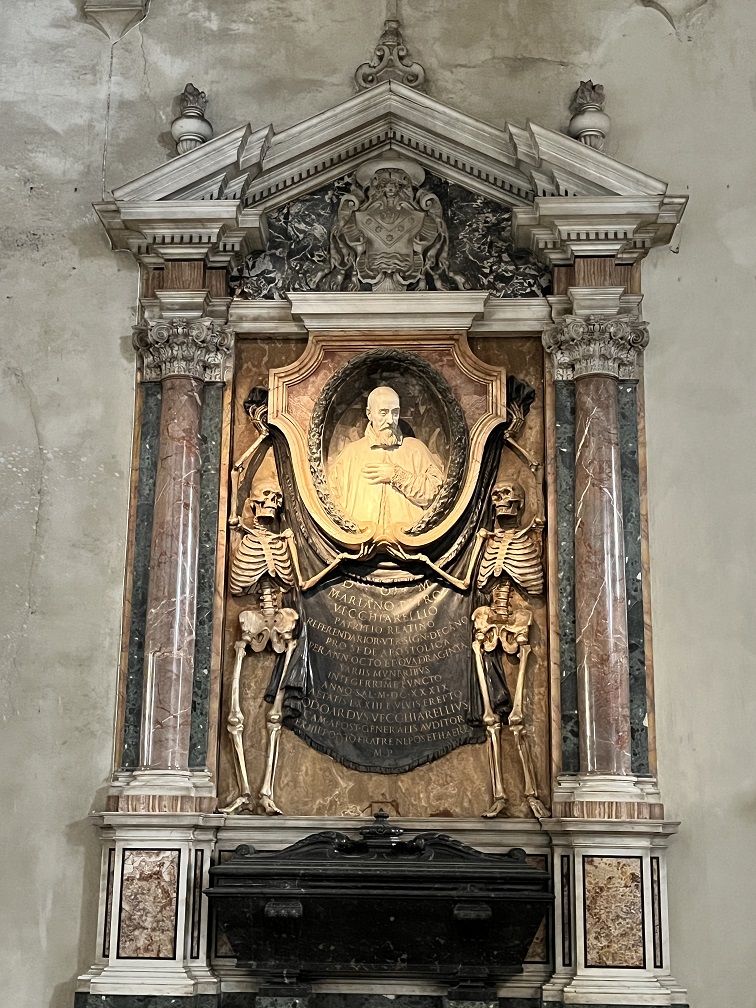Day 7 May 29, 2023
Today we did a 6-hour tour of the Appian Way Catacombs and Roman Aqueducts EBike tour. We got to explore the Roman countryside and navigate the highlights of the area including the 2300-year-old Appian Way, the 3rd century Aurelian walls, and the Roman Aqueducts. Our guide was Francesca, and she was a delight and very thorough with the history of what we were seeing. She navigated us through parts of the city first (was a little scary with all the traffic!) and then took back streets that led us to the countryside. We learned about the history of the Appian Way, which was constructed in 312 B.C. We saw important landmarks, such as the Caracalla’s thermal baths, the Villa of Maxentius, the ancient Aurelian Walls, the impressive tomb of Caecilia Metella, and the miles-long Aqueducts of antiquity. We also stopped at the San Callisto catacombs, which were built in the second century and named after the deacon St. Callixtus. There were a lot of familiar sights between the catacombs we saw today and those we saw yesterday. Still fascinating!
Even though we had e-bikes, John and I rarely used the “e” part, lol! We did have one guy, Eric, who we think had never ridden a bike before as he toppled over a few times (funny, not funny). Luckily, he only had a few scrapes and bruised ego. I, unfortunately, was behind him at one point and he stopped suddenly due to balance issues, and I luckily landed in grass. I still got bruised up, as the bike rammed into the side of my right leg. Thanks Eric……
We then ventured to the Basilica of San Pietro in Vincoli since it was nearby. It is best known for being the home of the Michelangelo’s statue of Moses, part of the tomb of Pope Julius II.
Miles biked – 16
Miles walked – 5.5
